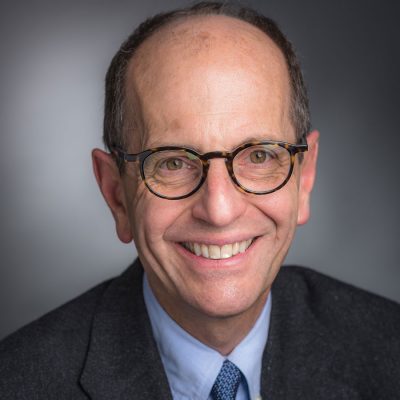Dana-Farber Cancer Institute announced that The Rossy Foundation has committed $10 million to establish the David Liposarcoma Research Initiative. The five-year initiative will spearhead groundbreaking research into liposarcoma at Dana-Farber and external collaborating partner institutions, with the aim of transforming the treatment of this rare, underfunded, and understudied disease in order to improve care of patients through research. The Rossy Foundation and KBF CANADA have partnered to fund the first phase of the initiative.
This commitment from The Rossy Foundation will focus on collaborative research among various departments at Dana-Farber—including liposarcoma biology, biochemistry, immunology, metabolism, genomics, and epigenetics. By conducting research to improve fundamental understanding of the molecular mechanisms of this disease, the initiative may lead to new approaches to overcome treatment resistance, as well as new strategies for clinical research to improve the outcomes of liposarcoma patients worldwide. The overall research initiative will be led by George Demetri, MD, director of the Sarcoma Center, senior vice president for Experimental Therapeutics, and Quick Family Chair in Medical Oncology at Dana-Farber.
“We appreciate The Rossy Foundation’s very generous commitment, as well as their recognition of the strength of Dana-Farber’s exceptional portfolio of basic science and clinical research programs to mobilize our world-class Sarcoma Center. This support will fund robust and much needed research against this rare disease,” said Laurie H. Glimcher, MD, president and CEO, Dana-Farber.
“The Rossy Foundation is proud to make this meaningful contribution toward better treatments for liposarcoma, which affects more than 4,000 patients in the United States and Canada every year. Our hope is that this initiative, under the direction of Dr. George Demetri, will drive breakthroughs that not only transform the landscape of liposarcoma research, but most importantly help extend and enhance the lives of patients across the globe,” said Gregory J. David, Vice-Chair of The Rossy Foundation.
The David Liposarcoma Research Initiative collaboration will start by bringing together the teams of 11 principal investigators from four institutions—Dana-Farber, Harvard Medical School, Brigham and Women’s Hospital, and the Broad Institute of MIT and Harvard. These investigators will work together on an interconnected portfolio of projects that builds upon the virtuous cycle of discovery, validation, and clinical testing with correlative science to stimulate continuous discovery: from bench to patient and back to the lab bench. Dana-Farber will be the lead and coordinating institution for this new initiative.
The initiative will also include engagement of a renowned panel comprising the international Scientific Advisory Board. The commitment also establishes the David Liposarcoma Research Initiative International Scientific Symposium in basic, translational, and clinical liposarcoma research. This symposium will enable the team to share results, guide the development of clinical trials in years three through five, and have a global influence to stimulate new collaborations in this field.
“The visionary and forward-looking support from The Rossy Foundation will greatly enhance our understanding of the underlying biology, genomics, epigenetics, immunologic, and other mechanistic characteristics of liposarcomas,” said Demetri. “It is our hope that the new research collaborations made possible by this commitment will ultimately lead to better therapeutic options for patients diagnosed with this rare disease.”
Cancers known as sarcomas develop from stem cells and connective tissues, such as muscle, fat, and bone, that hold the body together. Liposarcomas can appear anywhere on the body; they originate from precursors of fat cells that develop abnormally into cancerous growths as a result of genetic mutations in the sarcoma cells but not the rest of the person’s body. Sarcomas are rare, accounting for about 1% of cancers in adults. There are more than 250 subtypes of sarcomas: the sarcoma known as GIST (gastrointestinal stromal tumor) is the most common, but liposarcoma is the next most common. Although work from Dr. Demetri and colleagues in Dana-Farber’s Sarcoma Center have led to revolutionary therapies for GIST and some moderately effective FDA approved therapies for liposarcomas, such as trabectedin and eribulin, new therapies are needed to improve patient outcomes in liposarcomas and other types of sarcomas.
The Sarcoma Center at Dana-Farber sees more than 1,000 newly referred patients each year, including hundreds of patients with liposarcoma. Many patients partner with the Sarcoma Center to advance research by providing clinical data, banking tumor samples, and participating in clinical studies. The center’s tumor bank includes thousands of samples, which are shared for analysis across institutions. Additionally, the Sarcoma Center has an extensive regulatory-compliant infrastructure and experience working with the FDA to design academic clinical trials under its own authority and in collaboration with biotechnology and pharmaceutical industry colleagues on an international scale. Over the past two decades, the Sarcoma Center’s work has been instrumental to changing the landscape of treatment for sarcomas, such as gastrointestinal stromal tumors and leiomyosarcoma—including FDA approval of 10 new sarcoma indications for novel drugs.
This commitment supports The Dana-Farber Campaign, an ambitious $2 billion multi-year fundraising effort that will accelerate success and help Dana-Farber defy cancer through investments in revolutionary science, extraordinary care, exceptional expertise, and essential opportunities.



